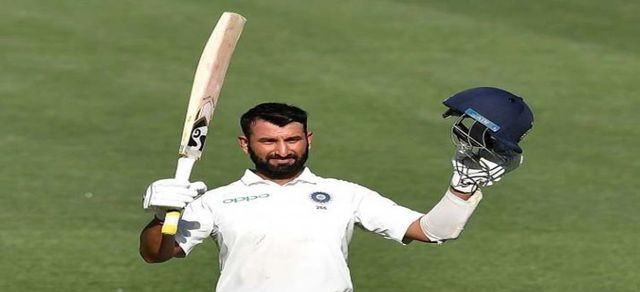
There are two choices when selecting the type of No. 3 batsman for a top-ranked Test side.
There's the instinctive counter-attacker, who despite his aggressive nature still has the technical expertise to withstand a good spell with the new ball. The perfect example is Australia's former batting champion Ricky Ponting.
If that type of player isn't available then you need someone with the patience of a fly fisherman, a brick-wall defence, and the unselfish outlook that allows him to bury his ego in order to improve the chances of success for his fellow batsmen. The prototype for this type of No. 3 is India's Rahul Dravid. Cheteshwar Pujara isn't quite the snug-fitting Armani suit that Dravid was at No. 3, but he's cut from the same cloth.
He showed at Adelaide Oval the value of patience and persistence and a strong mindset. While these qualities helped him blunt the Australian attack, they should also be a lesson to his more adventurous team-mates. Between his dogged defiance and their desire-to-be-dominant style of batting there is an acceptable middle ground.
If India were hoping Pujara's patient accumulation would blunt the Australian pace bowlers so that the strokemakers around him could dominate, the ploy failed. However, without Pujara's invaluable contribution India's total could easily have led to a first-Test capitulation and the possibility of a team hat-trick. While a hat-trick is usually a great accomplishment in cricket, in this case it would have referred to away Test series losses in South Africa, England and Australia. Instead, Pujara's major contribution and the skill of R Ashwin have India in with a chance to win in Adelaide at the time of writing. Such a confidence-boosting victory would be a reminder of India's 2003-04 achievement at the same venue, when Dravid excelled in scoring a double-century and a defiant 72 not out to ambush Australia.
On his third tour of Australia, Ashwin has learned a lot from his previous visits. He has shelved some of the variations that bedevilled him on the 2011-12 tour, causing him to leak runs like a rusty sieve. His variations are now of the subtle variety, allowing him to maintain control while still being on the attack.
In an attritional Test match this was a luxury that allowed Virat Kohli to control Australia's scoring rate. Ashwin also enhanced his reputation for being a lefty-killer, and he must have been delighted that Australia provided him with so many potential victims.
Nevertheless his considerable contribution would have been wasted without the magnitude of Pujara's innings.
The Australian bowlers performed with skill and wisdom as they tempted India's strokemakers with full deliveries that turned out to be wolves in sheep's clothing. Sure, there were some extravagant shots from the Indian batsmen but credit the Australian pacemen for having the courage to lead them into temptation.
Australia should be grateful to former fast bowler Craig McDermott, who changed the mindset of their pacemen. When McDermott took over as the bowling coach he inherited a group who loved to bang it in short of a length and test the opponents' patience. McDermott reset the mentality to one of testing the opposing batsmen's nerve by tempting them with full deliveries. Fortunately, his invitation-to-drive mantra has been passed on to the current generation.
However, Pujara was not tempted early and he resisted any urge to attack until he was left with the lower order and little choice. The fact that this year Pujara has scored centuries in both England and Australia in demanding circumstances is a sign that he is maturing into a reliable performer in all conditions. There's no doubt that he is the ideal No. 3 for this team of impetuous Indian batsmen. He's the cruise control on a high-speed Ferrari and the rest of the batsmen need to heed his warning when danger looms.


.jpeg)

